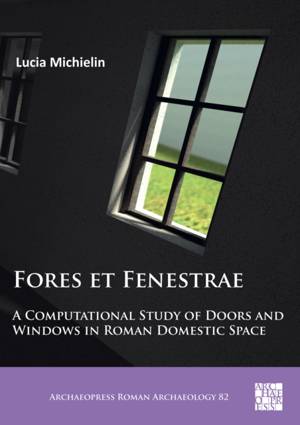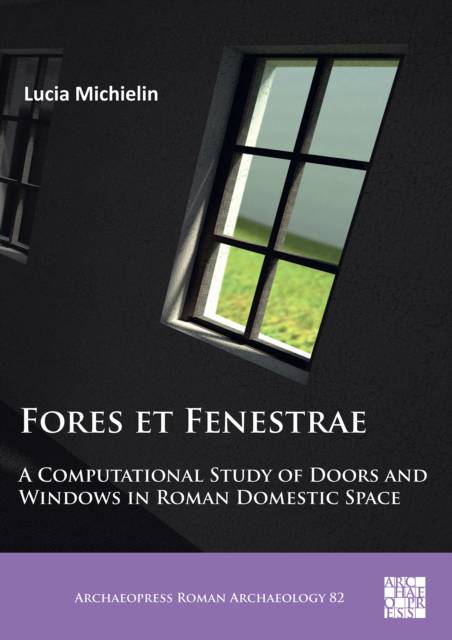
- Afhalen na 1 uur in een winkel met voorraad
- Gratis thuislevering in België vanaf € 30
- Ruim aanbod met 7 miljoen producten
- Afhalen na 1 uur in een winkel met voorraad
- Gratis thuislevering in België vanaf € 30
- Ruim aanbod met 7 miljoen producten
Zoeken
Fores Et Fenestrae
A Computational Study of Doors and Windows in Roman Domestic Space
Lucia Michielin
€ 64,95
+ 129 punten
Omschrijving
Fores et Fenestrae aims to analyse Roman doors and windows and their role as an essential part of daily life. They are the structures that connect not only rooms but also houses themselves to the outside world. They relate to privacy, security, and light in domestic spaces. Until very recently, the role of doors and windows in shaping the life and structure of Roman private dwellings has been greatly underestimated. The reason for this lies primarily in the difficulties linked to their study. The low level of preservation of walls and the widespread use of perishable and recyclable materials hinder in many cases a correct assessment of these structures. To achieve greater understanding, the author followed a computational approach. The two cores of the research are the analysis of the database and the observation of results based on new 3D models. 1855 doors and windows were surveyed across eight towns of Roman imperial Italy. The information collected has been organised in a database comprised of nine tables and mined through statistical analyses. Three 3D models of different dwelling types have been generated simulating natural materials and light conditions to observe the role of doors and windows in context. The work is subdivided into three sections. The first explains the study's methodology and analyses previous scholarship on the topic, highlighting how the issue of doors and windows has often be ignored or only superficially considered. The second section collects typologies of complementary sources to better comprehend the results of the statistical analyses and to integrate the 3D models; literary, epigraphic, and visual sources are considered. To these are added the analysis of the archaeological sources. The third part constitutes the core of the analysis. It is composed of two chapters, the fi rst of which provides a detailed overview of the statistical analyses produced from the sample collected. The latter chapter investigates the results of the renders and analyses views and natural light in the Roman house.
Specificaties
Betrokkenen
- Auteur(s):
- Uitgeverij:
Inhoud
- Aantal bladzijden:
- 296
- Taal:
- Engels
- Reeks:
Eigenschappen
- Productcode (EAN):
- 9781789696172
- Verschijningsdatum:
- 10/06/2021
- Uitvoering:
- Paperback
- Formaat:
- Trade paperback (VS)
- Afmetingen:
- 203 mm x 290 mm
- Gewicht:
- 399 g

Alleen bij Standaard Boekhandel
+ 129 punten op je klantenkaart van Standaard Boekhandel
Beoordelingen
We publiceren alleen reviews die voldoen aan de voorwaarden voor reviews. Bekijk onze voorwaarden voor reviews.








